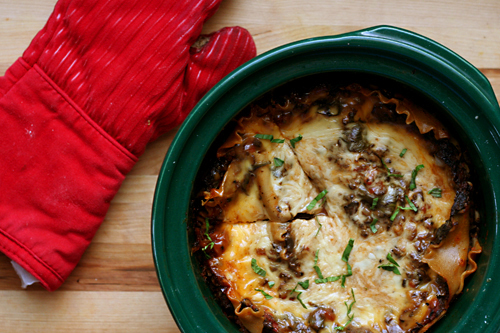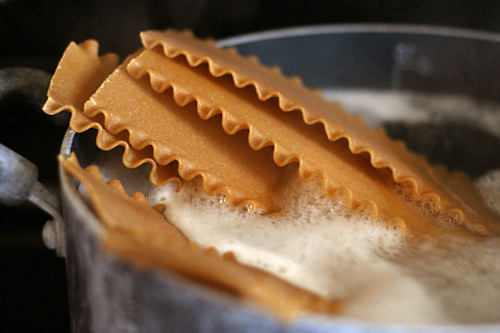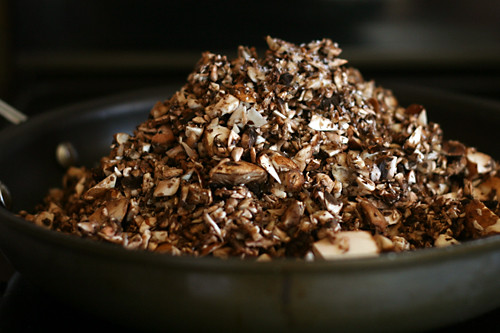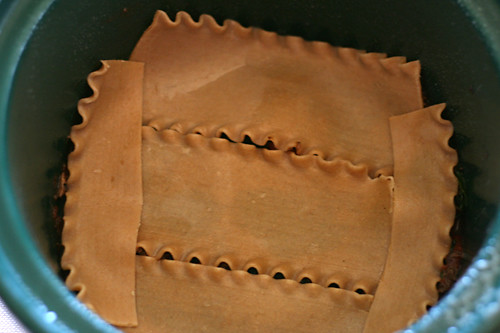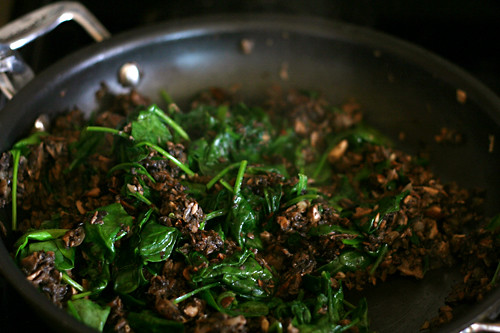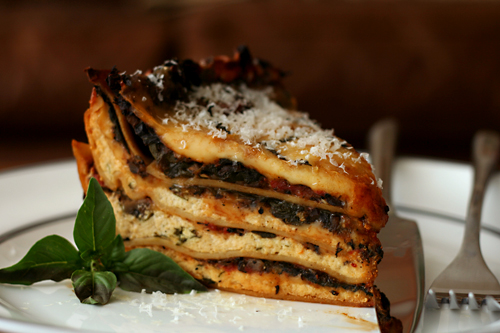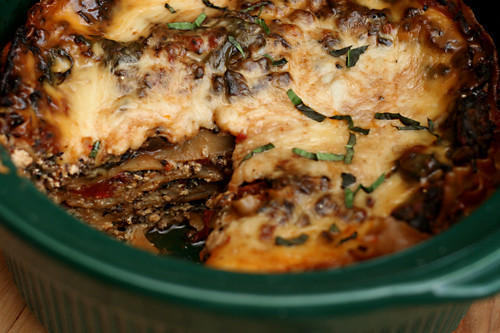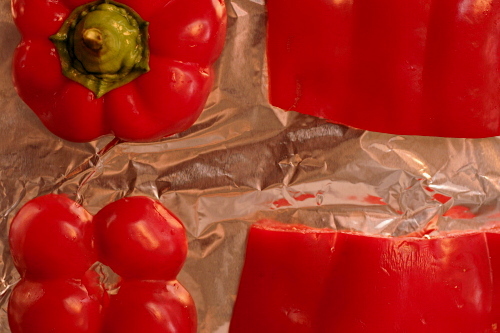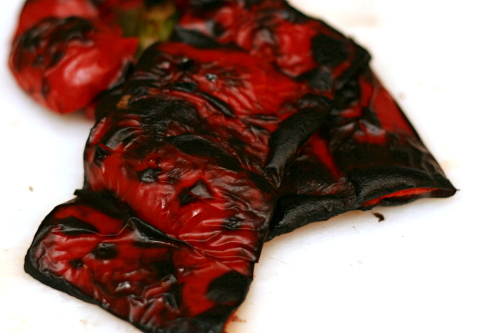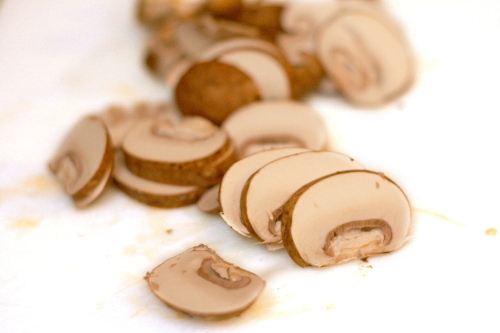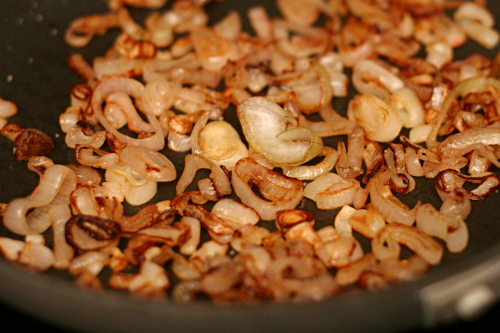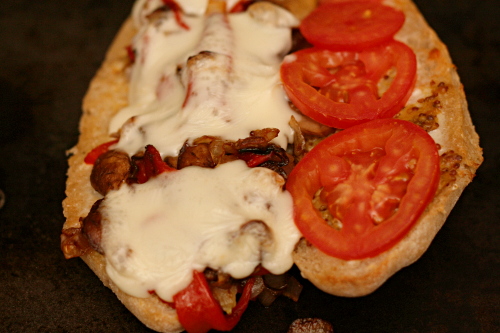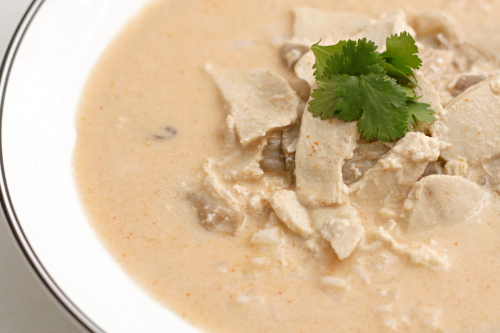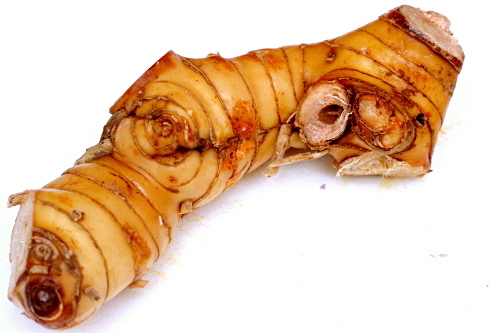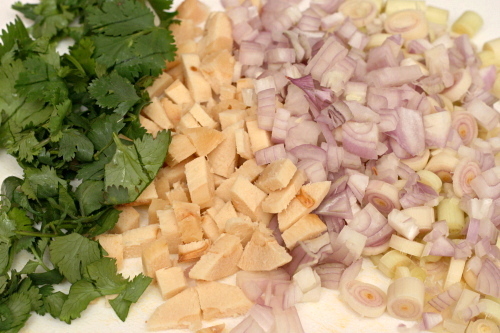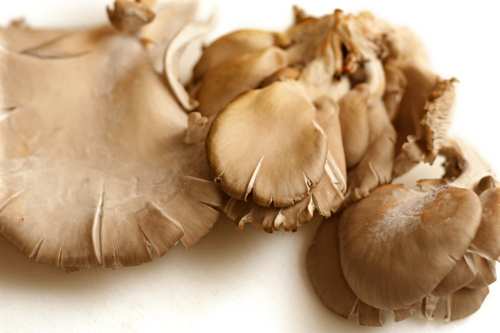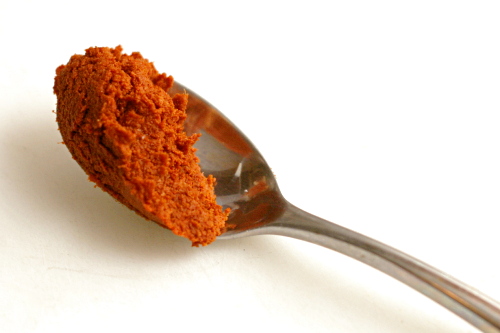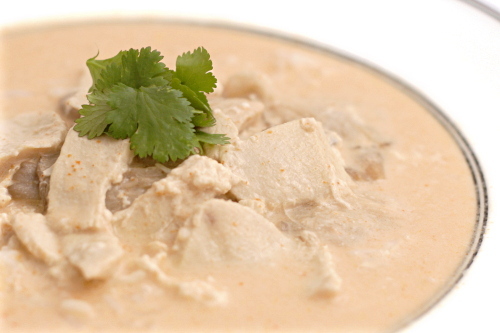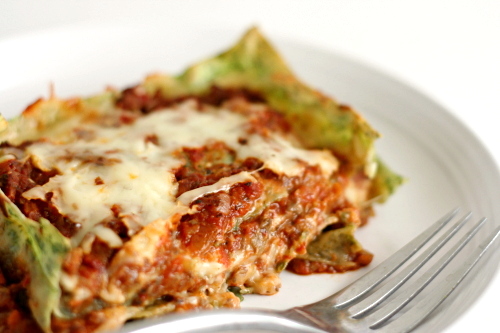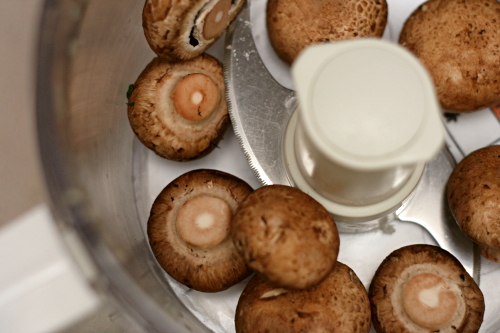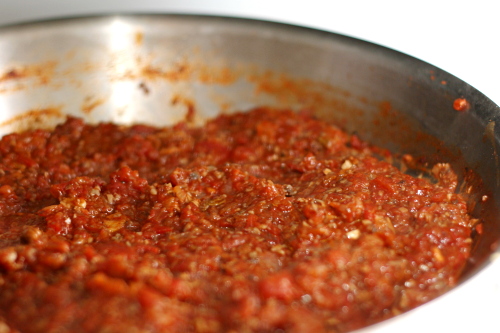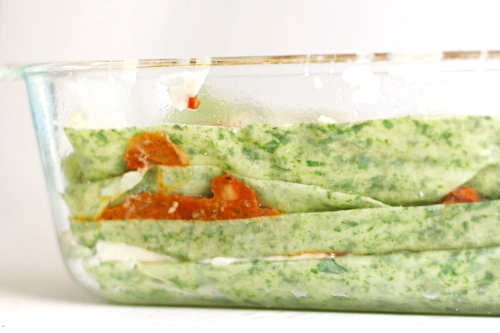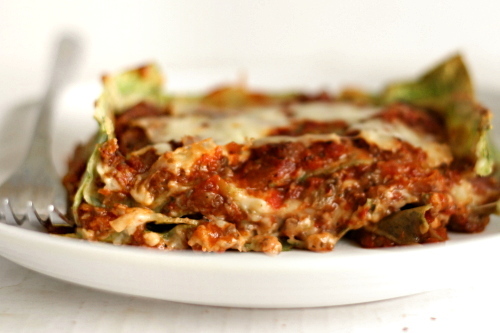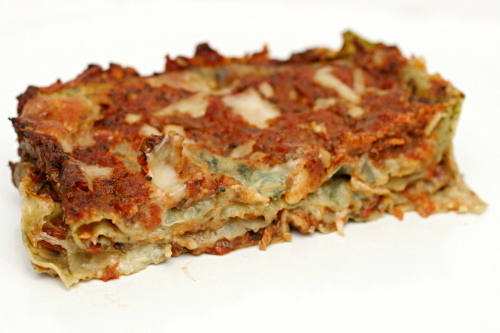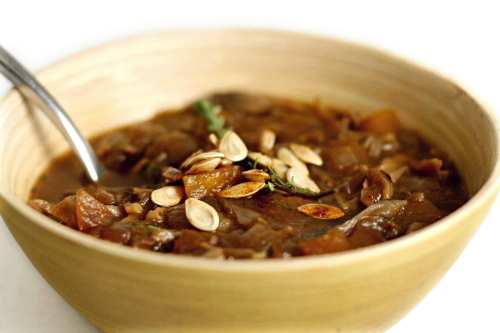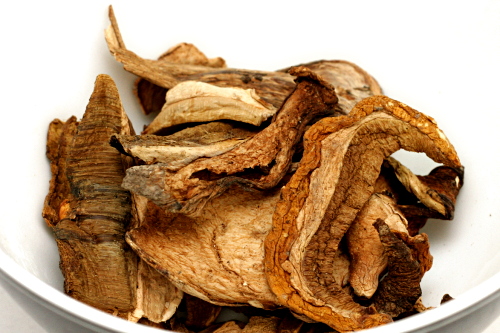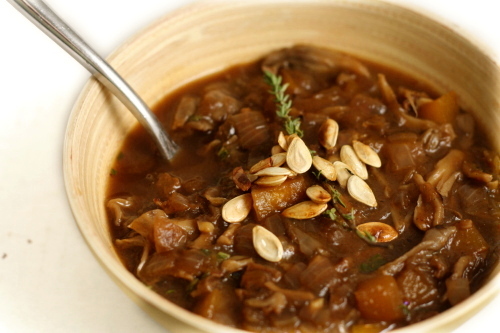Lasagna cooked in the slow cooker is not that different from lasagna cooked in the oven. It has the same ingredients, the same layers, the same browned cheesy top – and the same amount of effort required to make it. Really the only thing that’s different is the amount of time it takes to cook.
This was good news in a way. I was surprised that the lasagna wasn’t watery and that the top looked almost exactly the same as a baked lasagna. The problem, of course, was that it wasn’t any easier to put together.
Another problem is apparently that béchamel sauces curdle in the slow cooker. This recipe was originally based on a cream sauce instead of tomato sauce. Since béchamel didn’t work, the recipe called for a jar of Alfredo sauce.
I’m not usually one for dumping jars of prepared foods into my recipes, but after a scan of the jar label revealed no unrecognizable ingredients, I had just about acquiesced to buying it – until I looked at the fat content. Jarred Alfredo sauce (like homemade Alfredo sauce) is almost pure cream, and I just couldn’t stomach the idea of adding all that fat to what I intended to be a weeknight meal.
Replacing the cream sauce with tomatoes made this recipe very similar to my favorite vegetarian lasagna, but that’s okay, because they’re flavors I like. In fact, the lasagna had a lot of qualities I love, with its meaty flavor without any meat, plenty of cheese, and plenty of vegetables to even out the cheese. While it wasn’t any better than oven-baked lasagna, it wasn’t any worse, and it can’t hurt to have the option for a longer cooking time.
One year ago: Basic Pancakes
Two years ago: Brioche
Three years ago: Salad with Herbed Baked Goat Cheese
Printer Friendly Recipe
Slow Cooker Spinach Mushroom Lasagna (adapted from Cook’s Illustrated’s Slow Cooker Revolution)
Serves 6 to 8
I have a 4-quart slow cooker, but I don’t see any reason this wouldn’t work in a 5- or even 6-quart cooker. The lasagna just won’t be as tall.
I did not line the slow cooker with foil, because it seems so wasteful. Individual slices of lasagna were still surprisingly easy to serve intact, although the first one was messy.
I used half this amount of cheese. I’m sure the full amount is great, but I was trying to lighten it up a bit.
nonstick spray
8 curly-edged lasagna noodles (7 ounces), broken in half
1 tablespoon olive oil
1 onion, chopped fine
1½ pounds white mushrooms, trimmed and sliced thin
2 garlic cloves, minced
16 ounces fresh baby spinach
1 (28-ounce) can crushed tomatoes
1 (15-ounce) container ricotta cheese
1¼ cups (2½ ounces) grated Parmesan cheese
½ cup minced fresh basil
1 large egg
4 cups (1 pound) shredded mozzarella cheese
1. Line the slow cooker with an aluminum foil collar: Layer and fold sheets of heavy-duty foil until you have a six-layered rectangle that measures 16 by 4 inches. Press the collar into the back side of the slow cooker insert. Fit two more large sheets of foil into the slow cooker, perpendicular to each other, with the extra hanging over the edges of the cooker for a sling to help remove the lasagna later.
2. Bring 4 quarts water to a boil in a large pot. Add the broken lasagna noodles and 1 tablespoon salt and cook, stirring often, until the noodles are al dente. Drain the noodles, rinse them under cold water until cool, then spread them out in single layer over clean kitchen towels and let dry. (Do not use paper towels; they will stick to the noodles.)
3. Heat the oil in the same pot over medium-high heat until shimmering. Add the mushrooms, garlic, and ¼ teaspoon salt, cover, and cook until the mushrooms are softened, about 5 minutes. Uncover, add the onions, and continue to cook until the mushrooms are dry and browned, 5 to 10 minutes longer. Stir in the spinach, cover, and cook until wilted, about 2 minutes. Stir in the crushed tomatoes and ½ teaspoon salt.
4. In a bowl, mix the ricotta, 1 cup (2 ounces) Parmesan, basil, egg, ½ teaspoon salt, and ½ teaspoon pepper together. Spread ½ cup of the mushroom-spinach sauce into the prepared slow cooker.
5. Arrange 4 lasagna noodle pieces in the slow cooker, overlapping if necessary, then dollop 9 rounded tablespoons of ricotta mixture over noodles. Sprinkle with 1 cup mozzarella, then spoon 1 cup more mushroom-spinach sauce over top. Repeat the layering of lasagna noodles, ricotta mixture, mozzarella and mushroom-spinach sauce twice more. For the final layer, arrange the remaining 4 noodles in the slow cooker, then top with the remaining mushroom-spinach sauce and sprinkle with the remaining mozzarella and remaining Parmesan.
6. Cover and cook until the lasagna is heated through, about 4 hours on low. Let the lasagna cool for 20 minutes. Using the sling, transfer lasagna to serving platter and serve.
